
How Your Business Can Make More Money with Amazon
The digital marketing industry gives a lot of focus to Google. How many articles have you read about SEO and pay-per-click advertising? Clearly, those are an important part of the digital marketing world, but over time, another search box has grown to dominate how people use the web.
In 2016, Amazon overtook Google as the first place people turned when looking to make a purchase.
That change is meaningful. Understanding how to reach people online has to start understanding how they search for your products, and these days, that means thinking about Amazon.
How Amazon Dominates Online Shopping
Amazon’s far from a new player in the world of online shopping, and every year they go a little further to becoming an even bigger player. As the Amazon empire continually expands, they’ve become one of the most dominant forces in not just ecommerce – but all commerce.
They’ve become the go-to source for just about everything.
Amazon provides the same convenience in the online space that malls and shopping centers provide in the offline space, but even more so. You can find just about everything you could possibly want to buy in one place. That makes it an easy, obvious place to turn to whether you’re looking for clothes, electronics, household items, snacks, books – you name it.
They keep giving consumers more reasons to hang out on the site.
All the online giants are competing to get people to spend more of their time online on their site rather than on others. That’s why Google increasingly puts the answers to questions on the search results page itself, why they tried (unsuccessfully) to capture more of the social media time spent online with Google+, and why Facebook’s algorithm chooses to display precisely the updates in your feed it thinks you’ll be most interested in.
It’s all about making it second nature to pull up their site first, or at least frequently, whenever you’re online. And Amazon has shown that it’s playing this game as well.
They’ve launched their own streaming platform as part of Amazon Prime, which includes many original shows that fans can only view on Amazon. They developed their own music platform, including a wide array of albums that are free to Prime members – putting them in competition with not only iTunes, but also Spotify and Pandora. And more recently, they’ve launched their own social media-style program, Amazon Spark, that embeds images and recommendations from influencers into the Amazon mobile app.
In short, Amazon is the (not-so) new marketing and exposure platform to be on.
To state the obvious, the time your audience spends on Amazon is time they’re not spending on your website. That’s not ideal, but you can make it work for you if, instead of treating Amazon as your competition, you play nice with them and make sure your products are one of the options they’ll see when they go searching on Amazon.
The Pros and Cons of Selling Your Products Through Amazon
If your business isn’t selling products on Amazon yet, this is a good time to consider it. There’s a mix of benefits and issues to be aware of before making a decision though.
The Big Pro: You reach way more people.
The biggest benefit is also the most obvious one. Loads of people use Amazon and even many of your current best customers are more likely on a given day to pull up their Amazon account than to navigate to your website.
Amazon hasn’t shared exact numbers of how many people use their site, but third parties predict that there are 80 million Prime members alone, and that Prime makes up a little over half of the total number of customers.
No matter how much you invest in SEO and PPC, you can’t expect to get that kind of traffic to your own website. When you list your products on Amazon though, you can tap into those numbers and start to reach this huge pool of consumers who are ready to shop.
Con: You lose some of your branding power.
When someone clicks on one of your products on Amazon, most of the page they see will still be heavily branded for Amazon.
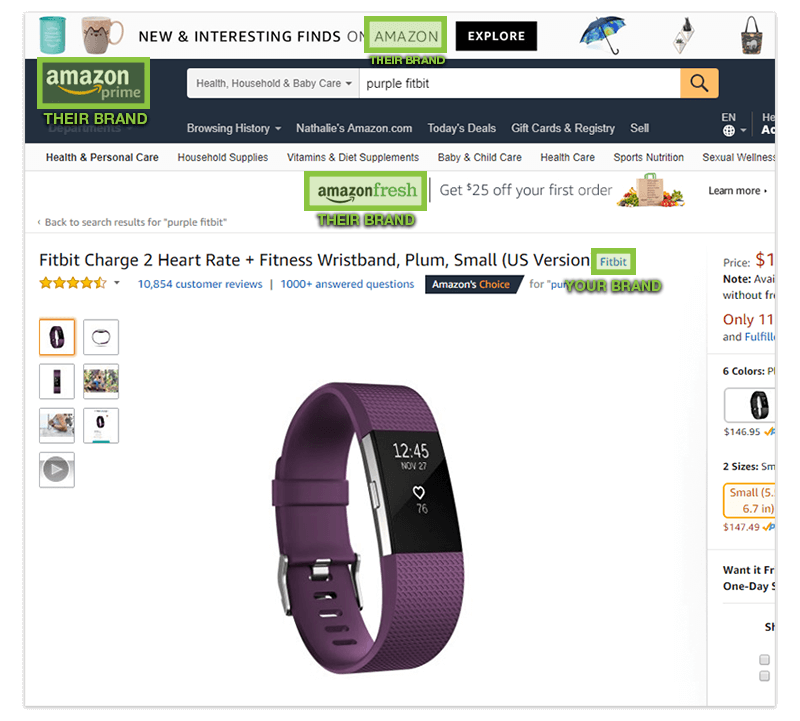
Your brand gets a tiny mention next to the product description, while Amazon and their various products and services get much larger mentions throughout the page. That makes plenty of sense for them to do, of course. You’re not their priority. The tradeoff to tapping into their audience is that you lose control over the branding and face limitations to your ability to develop a relationship with the customers that find you on Amazon, rather than through your own website.
Pro: You benefit from Amazon’s data and design.
Anyone doing digital marketing knows that reviewing your marketing analytics in order to understand what works and improve over time is an important part of doing it well. But you’re probably working with a much smaller data set than Amazon is.
They’ve been at it for years and have amassed a huge number of customers throughout that time. Their A/B testing, the different designs they’ve tried, and their recommendation engine have all been tried, tested, and analyzed by experts over time. In short, they know how to get visitors to buy things from them. If you’re on their platform and they profit when you profit, you’ll be benefiting from all the knowledge and work they’ve put into becoming a perfectly optimized buying platform.
Con: You risk helping a business that could become your competition.
Amazon moves into new industries and spaces with great regularity. There’s no reason to think that, just because they don’t sell the types of products you sell now, they never will. And once they do, you’ll be at a disadvantage to compete with them on their own platform. That said, not being on their platform doesn’t put you at a particular advantage for competing with them either, but it would mean you weren’t letting part of your proceeds go to a competitor.
Pro: You can let them handle payments and fulfillment.
Storing and shipping your products requires cost and labor that can quickly add up to being one of a company’s main expenses. If you choose to use their fulfillment service, you can let Amazon take care of it for you. It does require a fee, but for many businesses the fee will come out to less than dealing with all the storing, shipping, and logistics yourself.
Con: You have to pay them fees.
Speaking of fees, Amazon’s not going to let you list products on their website for free. Naturally, something’s got to be in it for them. Merchants that work with the company can expect to pay: a monthly fee, a referral fee for each product sold, a fulfillment fee if you use their fulfillment service, and you may have to pay more for shipping costs than Amazon charges the customer if you don’t use their fulfillment service on top of all that.
Figuring out what Amazon’s fees will cost you can take some work and make your accounting more complicated. But as with options like PPC, if the extra cost and work yields you more sales, it can be well worth it in the profits it earns you.
Conclusion: Use Amazon, but keep up your own website and marketing.
For most businesses, the best move forward is to continue building up your online brand and visibility in other channels, while also taking advantage of the increased exposure and sales that Amazon can bring. That way, you can continue the digital marketing tactics that allow you to build a relationship with your customers, without losing access to the increased revenue more sales on Amazon can provide.
How to Turn Amazon into a Marketing Tool for Your Business
Like any other online platform for reaching customers, Amazon’s competitive. You have to play your cards right if you want to find success there. To reach enough new customers to make your relationship with the company worth it, there are a few best practices you should follow.
Optimize Your Listings
Since your listings are on borrowed land, so to speak, you don’t have as much control over how you present your product as you do on your own website. That makes it especially important to take advantage of every chance you have to optimize your listing.
1. Craft clear titles.
Being clever isn’t as important on a channel like Amazon as being clear. Your title should include the most important information about your product that a customer could need, ideally without being too long to make skimming possible.
That usually means including the brand name, the type of product it is, any size information that’s relevant, and important descriptors that people may be looking for like “organic” or “adjustable.”
Don’t get bogged down trying to include all the relevant details about your product here, focus on the most important descriptors that someone searching for what you’re selling would need to know.
2. Include high-quality images.
Think about it, have you ever clicked on an Amazon listing that didn’t have an image? Why would you? Most shoppers are visual and not only having images, but making sure that your product looks good in them, is important to how well your items are likely to sell.
Some buyers are going to notice price first and foremost when they’re browsing, but many will click on the image their eyes are most drawn to, especially for any types of items where style and aesthetics are a priority.
For many types of items, it’s best to include multiple images so people can get a feel for how an item looks at different angles and in different colors.
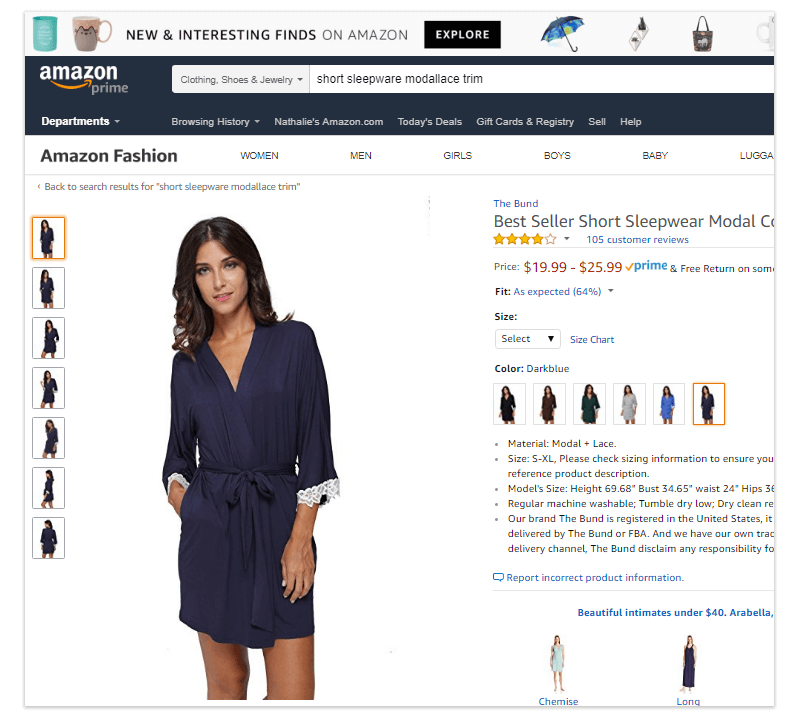
3. Use the description section to really promote your product.
There are two sections of your Amazon listing where you get to expand on what your product is and what makes it worth buying. The first and most important of the two is the bulleted section located at the bottom of the main listing.
This is where you can add all the important information that you can’t fit in the title and start to make the case for what makes your product different from (and hopefully, better than) other similar products consumers will find on the site.
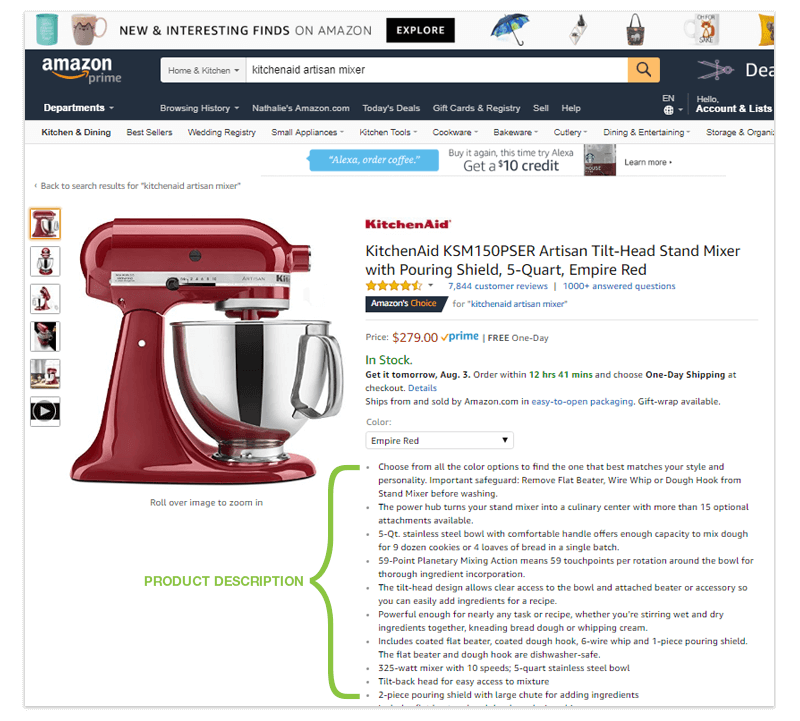
Moving further down the listing though, you get even more space to make your case with images and additional marketing copy. This is a part of the page many consumers may not bother to see, but for anyone needing that extra push to make a decision, it can be a valuable space. Take advantage of your ability to use images here. Since most people don’t make a point to visit this section of the page, your best bet for getting their attention is by capturing it while they’re scrolling down to check the reviews.
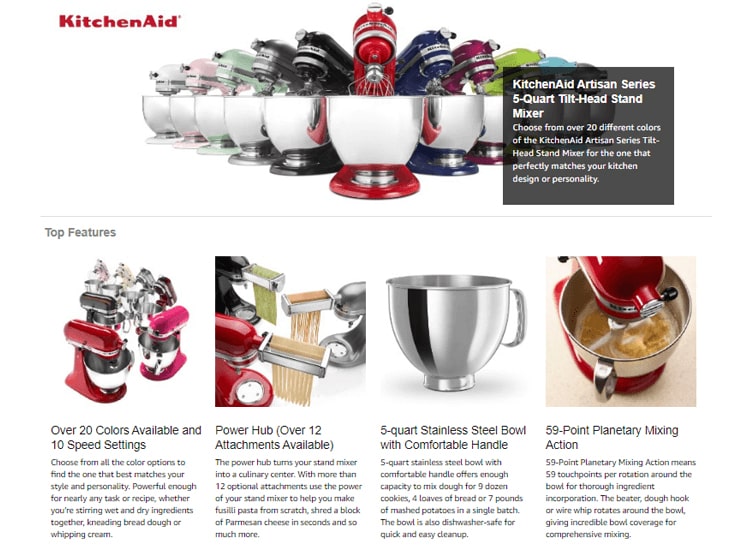
4. Provide ample information.
One of the risks people take when buying products online is ending up with something that isn’t what they thought it was. Maybe that cutting board looked bigger in the picture or you assumed that shirt would feel softer than it really does. You don’t have total control over your customers’ expectations, but you can do everything in your power to make sure nothing in your listing leads them astray.
Try to think of everything a potential consumer might want to know about your product and include that information somewhere in your description. That includes both basic information like size and color options, but could also include information like other products they might need to buy to be able to use it or some basic tips on how it works. Aim to be thorough, while including the most important information in the most obvious spots in your listing, such as the title and upper bullets.
5. Use research-backed search terms.
While it’s not in the listing that customers can see, merchants have access to a Search Term field that you can use to tell Amazon the types of keywords your product will be relevant for. If you’re already doing PPC and SEO marketing (and you should be), then you should already have a good idea of the relevant search terms people use for your products. You can check the keyword research you already have to see how it relates to Amazon results by plugging your main target keywords into their Sonar keyword research tool.
Fill the Search Term section in with all the keywords your research has shown are commonly used by people looking for the kind of product in the listing.
There are a few guidelines it’s good to follow here:
- Use all the available space Amazon allows to target as many keywords as possible
- Avoid filler words like “for” or “in”
- Leave just a space between words. Don’t waste a character on a comma
- Avoid exclamation points – you’ll both waste a character and ensure your product only shows up if the searcher includes an exclamation point in their search
- Don’t repeat keywords
The more relevant keywords you’re able to include, the better your visibility for relevant searches will be.
6. Encourage reviews.
In a marketplace as competitive as Amazon’s, customer reviews will often make or break a consumer’s decision to buy. The tricky thing about reviews is, of course, that it’s not up to you whether or not a customer chooses to take a few minutes after their purchase to come back and say what they thought. You can’t make your customers review a purchase, but you can encourage them to do so.
Amazon allows sellers to send a follow-up email after a product has been delivered, which can both give you a chance to check in and make sure your customer is satisfied and nudge them to return to the site to review their purchase. A simple reminder and a link that makes it that much easier to do so can go a long way to increasing the likelihood of a customer review.
7. Answer questions.
Another feature Amazon offers to users is the ability to ask specific questions. If there’s anything about your product a customer wants to know before making the purchase, they can ask and you can answer. Other customers can answer too, but it’s a best practice for manufacturers to be quick with a response to fill in any gaps in knowledge customers might have.
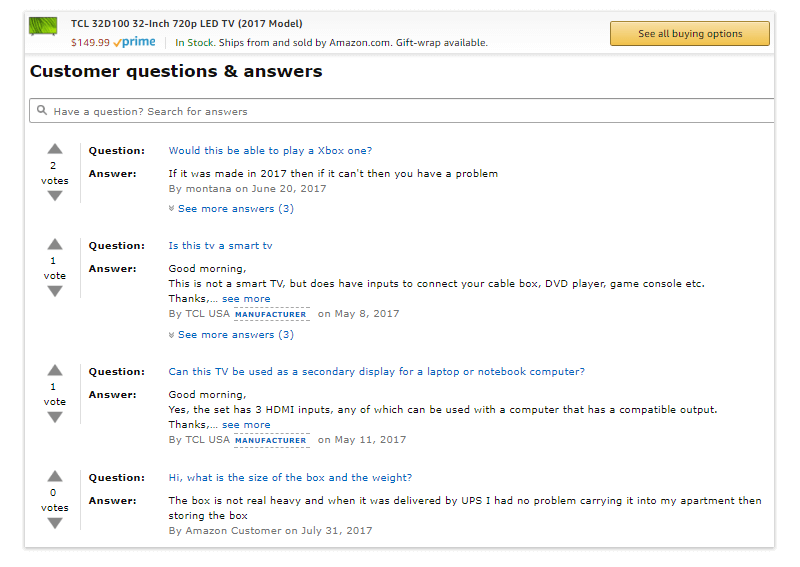
This gives you a chance to be helpful and ensure your customers can make an informed purchasing decision.
While it shouldn’t have to be said, make sure you’re completely honest here. Even if the answer might mean they won’t buy your product, it’s better to be clear and end up with only satisfied customers than to end up with a customer who really wanted something different than what you’re selling.
Use Amazon advertising.
If you’re in a product category that’s pretty well saturated on Amazon, then you may have a hard time being seen at all by customers. As with Google if your product is not on the first page of the Amazon search results, customers are far less likely to see and click on it.
Amazon lets its sellers purchase ads that display your products above and to the side of the first-page results, with a note that they’re “Sponsored.”
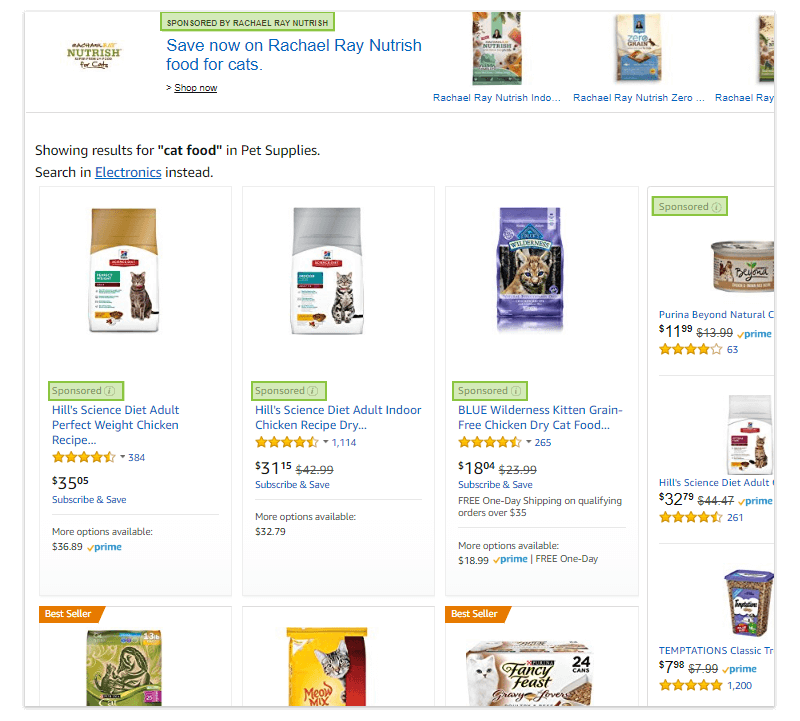
These options can vastly increase your visibility on the platform, especially if you’re just starting out.
As with PPC, you pay by the click for Amazon ads, so you’ll only be charged when someone actually clicks through to your product listing. You can use keyword targeting to ensure your ads only show up for the most relevant keywords, as well as product and interest-based targeting that will help you direct your ads toward people looking at similar products or doing related browsing on the site.
Market your business to your Amazon customers.
This part can be a little tricky because Amazon has strict rules about how far you can go to promote your own brand to your customers. You can’t include links or CTAs that will drive them away from Amazon and to your website or provide any offers that might incentivize them to come straight to you next time, rather than going through Amazon.
What you can do is use the connection you’ve made with a customer when they buy from you on Amazon to further their relationship with your brand. You can use your followup email to reiterate your brand name and logo and say a little something about who you are and the kind of service and experience you aim to provide.
While few brands take this extra step, you can even add a little something extra of value in your email. While content marketing is usually designed to drive people to your own website and keep them coming back, you can also use it as a way to add value to your Amazon customers and give them positive associations with your brand.
The kitchen supplies brand Cozyna uses their followup email after a teapot purchase to welcome customers to the “cozyna family” and includes an ebook with information on different types of teas and tea recipes.
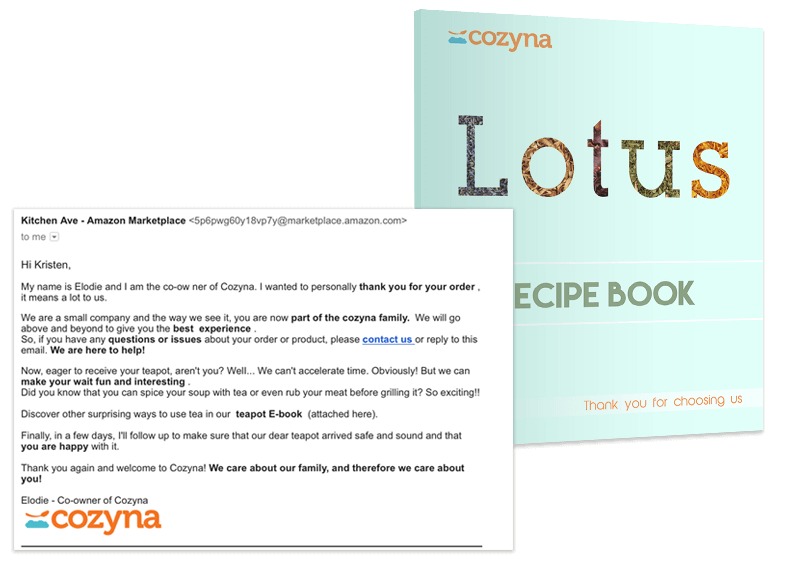
Even without a link back to the site, they’re able to make an impression on customers that’s more likely to make them remember the brand outside of the Amazon branding.
Use data to continually improve.
As with any other type of digital marketing, you’ll get so much more from your participation on Amazon if you regularly review your analytics to better understand what’s working.
For businesses with an Amazon Vendor Central account, you’ll have access to Amazon Retail Analytics, which provides a number of reports to help you track inventory and sales. You’ll also have the option to upgrade to Amazon Retail Analytics Premium, which provides a lot of valuable information on the types of customers purchasing your product and the paths they take to buying your product (or not, as the case may be).
Anyone advertising with Amazon will also get access to analytics that track many of the metrics familiar to PPC advertisers, such as impressions, click-through rates, and cost-per-click.
You can use all the Amazon metrics you have to gain a better understand of what works best on the platform and tweak your listings and campaigns over time for ever better results.
Even if you still think of them as a competitor, Amazon is the kind of competitor it’s worth doing business with. You can reach new customers and see bigger profits with their help. For most businesses, this is one case where it’s worth it to team up with your main competition to improve your own bottom line.




